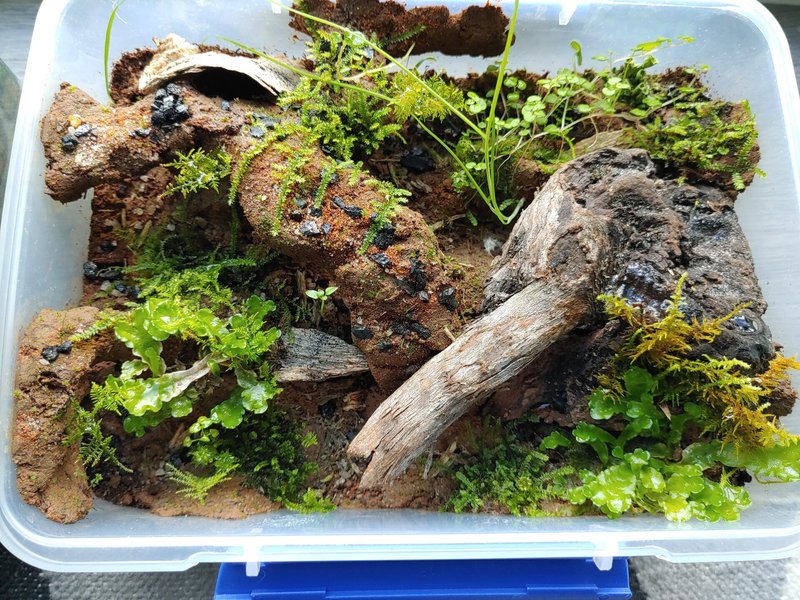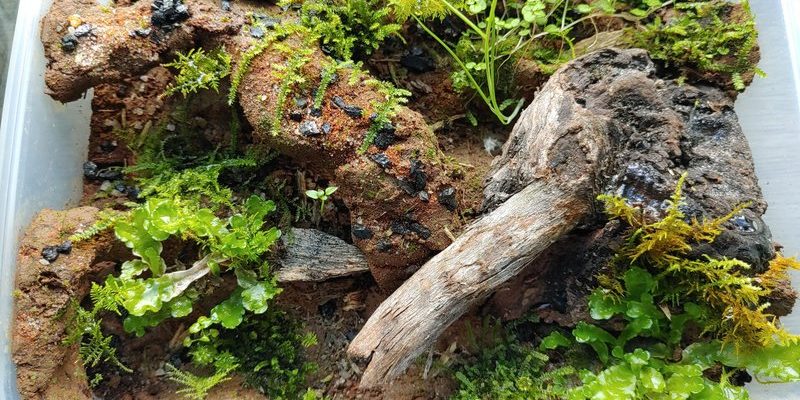
So, if you’re thinking about creating an enclosure for these little critters, you’re in the right place. Picture this: You’re sipping a hot cup of coffee, chatting with a friend about designing a cozy habitat, and you’re ready to dive into the nitty-gritty of how to do it. That’s exactly what we’re going to explore—step by step, ensuring your velvet worms enjoy their new home as much as you enjoy watching them.
Understanding Velvet Worm Habitats
Before you start building your enclosure, it’s crucial to understand the natural habitat of velvet worms. These little guys thrive in humid, warm environments, often found in leaf litter and soil in tropical rainforests. Think about a cozy, sheltered spot under a tree where it’s damp but not soaked. That’s their kind of place!
To replicate their environment, you’ll want to create a microhabitat that mimics this warmth and humidity. You might be wondering how to achieve that. First, consider the temperature. Velvet worms prefer temperatures between 20°C to 25°C (68°F to 77°F). You could use a small heating pad to maintain warmth, but be cautious—it shouldn’t be too hot, or you’ll create a sauna instead of a sanctuary.
Along with warmth, humidity is essential. A well-maintained enclosure should have around 70-85% humidity. This can be achieved through a simple misting system, or you can place a water dish inside to maintain moisture levels. But don’t go overboard; you don’t want a soggy mess!
Choosing the Right Enclosure
Now that you have a good grasp of their needs, let’s talk about what kind of enclosure you’ll need. Start with a glass or plastic container; an aquarium or terrarium works well. Make sure it has a secure lid to prevent any sneaky escapes—velvet worms are surprisingly good at finding their way out!
The size of your enclosure can vary depending on how many velvet worms you plan to keep. A small tank of around 10 to 20 gallons is perfect for a handful of these creatures. Ensure it has good ventilation; even though they love humidity, they also need fresh air. A fine mesh lid can be a fantastic solution.
When setting up the enclosure, think about the layout. Adding leaf litter, small twigs, and even some moss can create a naturalistic environment. Not only does this mimic their habitat, but it also provides hiding spots, which they love. Think of it as creating a cozy little home, just like how we might toss some cushions or plants around to make our spaces feel more inviting.
Setting Up the Substrate
The substrate is like the floor of your velvet worm’s home, and it’s important to get it right. Velvet worms enjoy digging and burrowing, so a substrate that allows them to do that is essential. A mix of coconut fiber and shredded leaves can provide both comfort and moisture retention.
Here’s how to set it up:
- First Layer: Start with a layer of clean, washed gravel at the bottom for drainage. This helps prevent water from pooling and keeps the substrate from getting too soggy.
- Second Layer: Add a layer of coconut coir or peat moss, about 5–10 cm deep. This holds moisture well.
- Top Layer: Finally, sprinkle shredded leaves or leaf litter on top. This mimics their natural habitat and adds texture for them to explore.
By layering your substrate this way, you create a safe and enjoyable environment for your velvet worms. Plus, it makes for a beautiful display to watch as they interact with their surroundings!
Temperature and Humidity Control
Once your enclosure is ready, you’ll need to focus on controlling the temperature and humidity. This is key to keeping your velvet worms healthy and happy.
As mentioned earlier, maintaining a temperature between 20°C to 25°C is ideal. You can use a small digital thermometer to keep track. Place it inside the tank where your worms will roam. If it gets a bit chilly, consider placing a heating mat under one side of the tank. Just remember to monitor it closely so it doesn’t overheat.
Humidity is equally important. A simple spray bottle can be your best friend here. Mist the enclosure lightly every few days to keep the moisture levels up. Here’s a quick tip: if you notice condensation on the glass, it may be too humid; if it looks dry, then it’s time to mist again. Finding that perfect balance can feel a bit like Goldilocks—just right, not too hot or too cold!
Feeding Your Velvet Worms
Feeding velvet worms can be one of the most fascinating parts of keeping them. These critters are carnivorous, primarily feeding on small insects and invertebrates. Think of them as nature’s little hunters!
You can offer them small crickets, fruit flies, or even termites. It’s best to provide food in small amounts, ensuring they consume it within a day or two to prevent any decay in the enclosure. You might be wondering if you need to keep a feeding schedule. While a couple of meals a week is generally enough, always keep an eye on how quickly they finish their meals.
Watching velvet worms hunt can be quite a show. They use slime to capture their prey, which is not just cool to see but also a testament to their unique adaptations. It’s like watching a nature documentary unfold right in your living room!
Cleaning and Maintenance Tips
Keeping the enclosure clean is vital for your velvet worms’ health. A clean habitat reduces the risk of mold and disease, allowing your worms to thrive. Here’s how to keep things tidy:
- Routine Checks: Regularly check for uneaten food and remove it quickly.
- Spot Cleaning: Every week, remove any accumulated waste or debris. A small scoop or tongs works well.
- Water Maintenance: Change the water in their dish regularly to ensure it stays clean.
- Substrate Replacement: Every couple of months, consider replacing the top layer of substrate to keep it fresh.
Cleaning doesn’t have to be a chore; think of it as part of your bonding experience with your velvet worms. Plus, it gives you a chance to observe their behaviors up close!
Considerations for Health and Safety
Finally, let’s touch on the health and safety of your velvet worms. Just like any pet, you’ll want to keep a close eye on them to ensure they’re doing well.
Look out for signs of stress, such as lethargy or lack of appetite. If you notice anything unusual, it may be due to environmental factors. Adjusting temperature, humidity, or diet can often solve the issue.
Also, ensure that their enclosure is escape-proof. Velvet worms are surprisingly agile, and a small crack can become a big problem. Regular maintenance checks will go a long way in ensuring a safe environment for your new friends.
Creating an enclosure for velvet worm observation can be a rewarding project. Not only will you gain insight into their unique behaviors, but you’ll also enjoy the beauty of having such an intriguing creature in your home. With a little effort and a caring touch, you’ll have a thriving mini ecosystem right at your fingertips. So, grab your materials, roll up your sleeves, and enjoy the adventure of being a velvet worm keeper!

